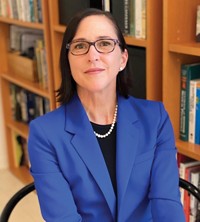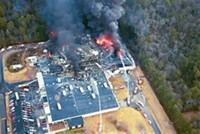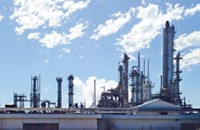Advertisement
Grab your lab coat. Let's get started
Welcome!
Welcome!
Create an account below to get 6 C&EN articles per month, receive newsletters and more - all free.
It seems this is your first time logging in online. Please enter the following information to continue.
As an ACS member you automatically get access to this site. All we need is few more details to create your reading experience.
Not you? Sign in with a different account.
Not you? Sign in with a different account.
ERROR 1
ERROR 1
ERROR 2
ERROR 2
ERROR 2
ERROR 2
ERROR 2
Password and Confirm password must match.
If you have an ACS member number, please enter it here so we can link this account to your membership. (optional)
ERROR 2
ACS values your privacy. By submitting your information, you are gaining access to C&EN and subscribing to our weekly newsletter. We use the information you provide to make your reading experience better, and we will never sell your data to third party members.
Safety
Chemical Safety Board officials seek collaboration with ACS
ACS Meeting News: CSB applauds ACS’s recent efforts to elevate the importance of safety
by Jeff Johnson
August 23, 2017
| A version of this story appeared in
Volume 95, Issue 34

Two top officials with the Chemical Safety Board, a federal agency that investigates chemical-related accidents, said they are exploring the potential for a collaboration with the American Chemical Society.
In separate presentations at the ACS national meeting on Monday, CSB Chairperson Vanessa Allen Sutherland and Kristen Kulinowski, a CSB board member and longtime ACS member, applauded the society’s recent efforts to elevate the importance of safety among chemists. Particularly, they pointed to policies that call for authors to address and emphasize safety concerns associated with work reported in ACS journals and the inclusion this year of safety as a core value in the society’s strategic plan. ACS publishes C&EN.
In introducing Sutherland during a talk in the Presidential Events, ACS President Allison A. Campbell stressed CSB’s importance as an independent investigator of chemical-related accidents.
“They do not shame or blame. They are not there to punish but to get the facts,” Campbell said. The board investigates the cause of accidents and makes recommendations to regulatory agencies, facilities, and others to improve safety, she continued.
Sutherland said that in the two years since she took over CSB leadership, much of her emphasis has been on building relationship with industry, academia, and others over safety, works she wants to expand with ACS.
With a staff of 40 and an $11 million annual budget, Sutherland described an agency stretched thin. President Trump has proposed defunding CSB, though it’s up to Congress to decide whether and how much to fund it.
“We are a small organization,” Kulinowski told C&EN. CSB’s safety concerns are similar to those of ACS, she said, and working together the two organizations could expand their safety outreach.
The paths of ACS and CSB have crossed before, she noted, primarily on investigations of accidents at academic labs or in classroom demonstrations gone bad. Beyond lab work, Kulinowski did not have specific initiatives in mind, but she said safety opportunities where the two organizations could align were plentiful.
Over its 19-year history, Sutherland said, CSB has investigated 130 accidents, made some 800 recommendations, issued nearly 100 reports, and produced 68 videos promoting safer practices. Sutherland described her agency as a science-based organization that searches for the root cause of chemical accidents.





Join the conversation
Contact the reporter
Submit a Letter to the Editor for publication
Engage with us on Twitter